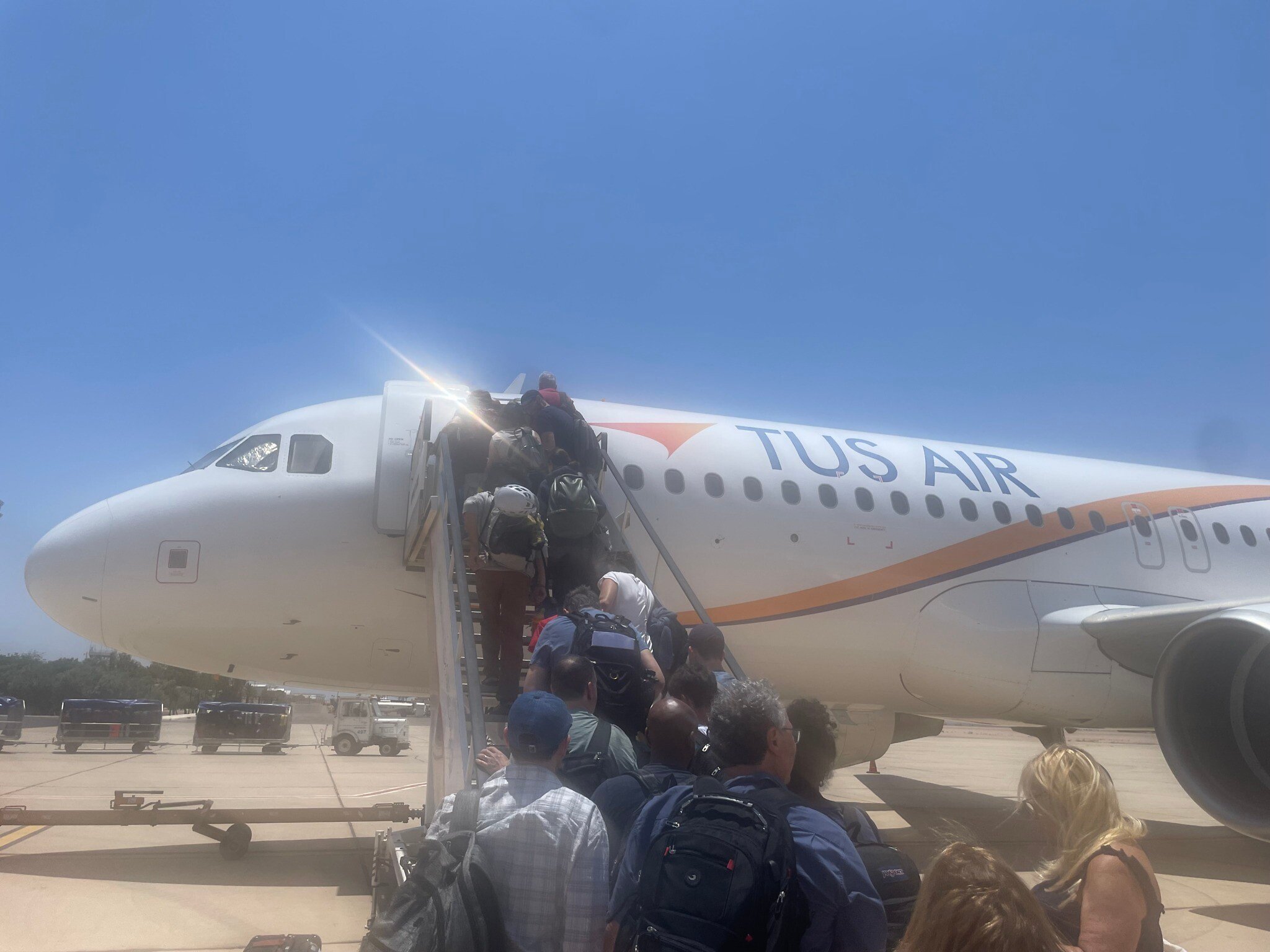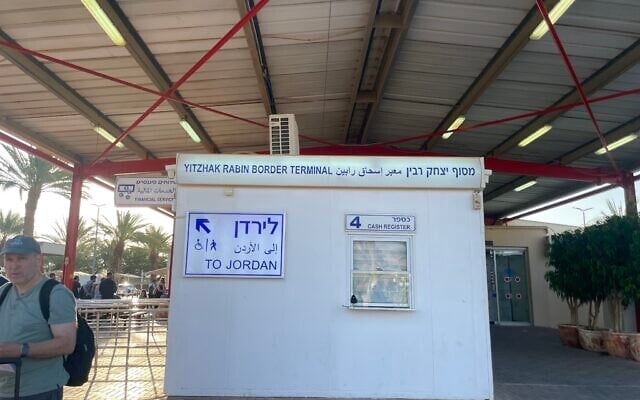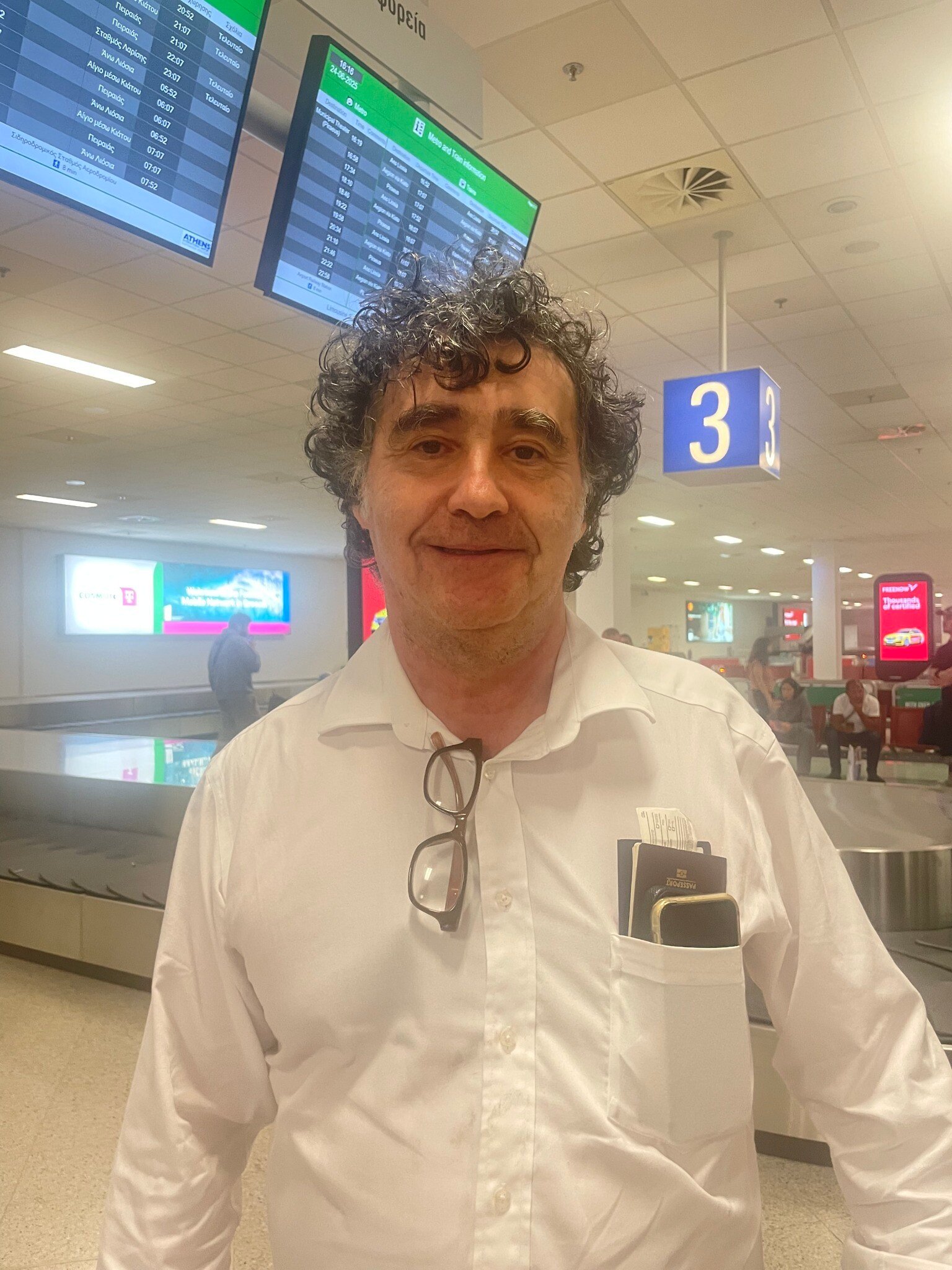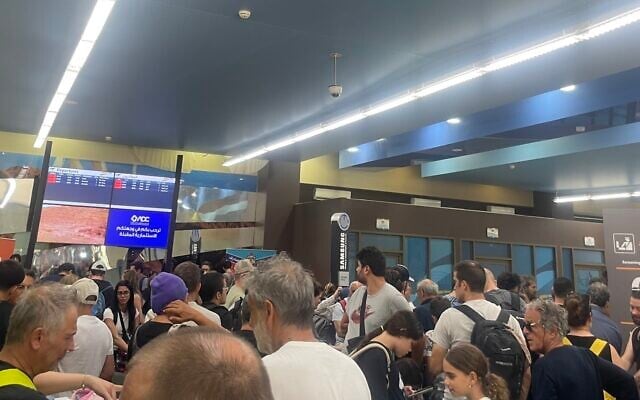



On Tuesday morning, hundreds of irritable Israelis schlepping suitcases stood in a snaking line between the Israeli and Jordanian sides of the border in the very south of the country.
When these travelers set out to leave Israel through the unusually crowded border crossing between Eilat and Aqaba on June 24, not all of them realized they were making their escape in the final moments of the conflict with Iran.
Had they known, some may have hunkered down for another night of sirens and missile attacks in exchange for the privilege — looking relatively good at this point — of flying through Ben-Gurion Airport. Still, even into Wednesday afternoon some Israelis were using the land crossing to leave the country, likely due to a dearth of flights out of Tel Aviv.
It wasn’t clear what caused a three-and-a-half-hour wait on Tuesday, but it may have been the existence of only one scanning machine on the Jordanian side used to examine every single piece of luggage.
Then again, noted the Jordanian salesman sitting in the duty-free shop, the border crossing is never usually this crowded.
“It’s been like this for a week,” said the salesman.
After Israel launched a series of preemptive attacks on Iranian nuclear and military sites beginning on June 13, Iran responded with indiscriminate ballistic missile fire on Israeli population centers, killing 28 people, wounding over 3,000 and displacing more than 9,000 from their homes.
Israel closed its airspace when it began the attacks, leaving thousands of stranded Israelis and foreign tourists scrambling to find a way out of the country, and only fully reopened it on Tuesday night after a fragile ceasefire appeared to hold.
In the interim, many who wanted to get out of the country found themselves making their way to Queen Alia International Airport in Amman by way of the Allenby Bridge in the southern Jordan Valley; via Aqaba in the south, near Eilat; or through Egypt via Sharm el Sheikh.
Aqaba is often seen as the easiest of the Jordanian border crossings with Israel to traverse, since it’s the entrance to the resort city of Aqaba, the mirror image of Eilat. But the tiny airport and border crossing weren’t set up to accommodate hundreds of Israelis every day.
As travelers waited in line at 7 a.m. on Tuesday, many having driven all night or hired buses from the country’s center, their phones pinged with alerts of yet another round of Iranian missiles before the 7:30 a.m. ceasefire went into effect, one of six barrages that morning.
“Don’t you want to turn those notifications off already?” asked Gad, one of a group of young Israeli emissaries heading to work at Camp Surprise Lake in Cold Spring, New York. “That’s why we’re getting out of here.”
One of the young women in line with him shrugged.
“It’s how I stay in touch,” she said, pointing to the Red Alert app on her phone.
There was every kind of traveler in line at the Aqaba crossing on Tuesday morning.
There were other young Israeli emissaries, part of the cadre of around 1,000 hired by the Jewish Agency to work at Jewish summer camps in the United States, who have been delayed because of the flight stoppages.
Some families were bringing their children to summer camps in the US, or making their way to long-planned family cruises to Alaska or the US national parks.
Bibianna, an Argentinian-Israeli from Kfar Tavor in the north, was heading to Argentina to care for her 88-year-old mother who had just broken her femur.
She was to travel 50 hours in total, from Israel to Aqaba to Athens to Paris before landing in Argentina, and then turning around and heading home two weeks later — presumably on a shorter return trip.
There were young couples with babies, including Dvir and Ada from Tel Aviv and their 3-month-old, Ilai, who were escaping to friends in the United States after spending too many nights in their building’s bomb shelter.
“We had to get out of there,” said Ada. “Just for a little while.”
Even news of the impending ceasefire didn’t daunt her.
“Yeah, it could be that the airport will open again, but who knows when we’ll actually be able to get on a flight from Ben Gurion?” she said.
There were other obstacles to travel through the Aqaba crossing.
David Hansel, sporting a black knitted yarmulke on his graying curls, was heading to Paris to care for his ailing father.
He had taken off the kippah when he first joined the line, as he realized that the Jordanian border agents were looking for visible Jewish symbols.
The lone scanning machine detected every pair of tefillin, or phylacteries, packed in travelers’ suitcases. As the Jordanian airport agents spotted sets of phylacteries, they would ask the traveler to open their bags and search for prayer shawls, kippas, and any other sign of Jewish ritual items.
Hansel’s tefillin were in his small suitcase, and as soon as they were spotted, the airport agents sent him back to the Israeli side of the border to hand them over to the Israeli agents, from whom he can hopefully pick them up once he is back in Israel.
“I had no idea they look for people’s tefillin,” said Hansel, who had decided Sunday night to head to Paris. “I thought 10 times about doing this trip through Aqaba, but I had no idea they would stop me for carrying my tefillin.”
Another Israeli traveler held up his embroidered prayer shawl bag and announced to the other travelers not to approach the scanner with any ritual objects or even clothing with Hebrew lettering.
“They’ll take it all,” he said.
And Michele, a tourist from the south of France, was told to bring the Hanukkah menorah, candles and challah cover that she purchased during her trip back over to the Israeli side of the border.
“I told the Israeli agent to donate it all to a synagogue,” she said, shrugging.
It isn’t clear why the Jordanian border agents don’t want Jewish ritual objects brought into Jordan, although security is often given as a reason.
After the travelers passed through the border, they were loaded on buses for the 15-minute drive to King Hussein International Airport, a minor airport that has become a hub for Israelis during this crisis.
The main hall was packed tight with Israelis heading to Cyprus, Cairo and Athens, on their way to other destinations, many traveling on Tus Airlines, a Cypriot airline owned by Israelis.
“I haven’t slept in five days,” said Amjad, one of the Jordanian airport personnel, who was helping individual passengers figure out their flights.
“But business is good, better than it’s been since October 7,” he said.
As Israelis landed in Athens, they filed quietly onto the shuttle bus, tired and worn, but relieved to have passed the most arduous legs of their journeys.
On the way out of the airport, on yet another shuttle to a local Airbnb in the town of Artemis for a layover before a flight to the US the next morning, travelers could see an El Al jet and a Sun D’Or plane parked on the outskirts of a runway, awaiting the moment when Israeli planes can fly the open skies.




